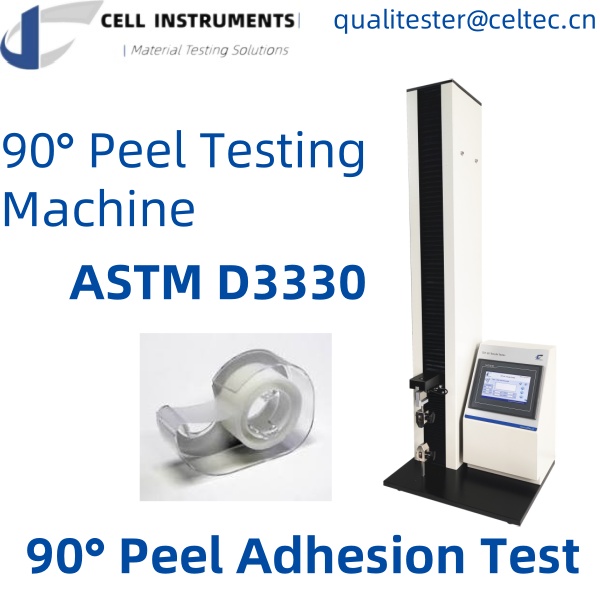Introduction
The 90° peel adhesion test is a critical method for assessing the adhesive performance of materials. It helps determine how well adhesive bonds hold under stress, making it essential in industries such as packaging, medical devices, and textiles. This article delves into the significance of the 90° peel adhesion test, its applications, and relevant standards, including ASTM D3330.
What is the 90° Peel Adhesion Test?
The 90° peel adhesion test measures the force required to peel a material from a substrate at a 90-degree angle. This test provides insight into the strength of the adhesive bond and is crucial for ensuring product reliability.
Applications of the 90° Peel Adhesion Test
This test is widely used in various industries, including:
- Packaging: Ensuring that labels, seals, and packaging materials adhere effectively.
- Medical Devices: Verifying the adhesion of medical tapes and plasters.
- Textiles: Testing the bond strength of fabric adhesives.
How to Conduct a 90° Peel Adhesion Test
- Preparation: Cut samples to standardized dimensions as per ASTM D3330.
- Setup: Use a reliable 90° peel testing machine, such as the Cell Instruments’ model, which provides precise control and data output.
- Execution: Place the samples in the machine, ensuring proper alignment, and initiate the test. The machine will measure the force required to peel the adhesive from the substrate.
- Data Analysis: Analyze the force readings to determine adhesion strength.
Why ASTM D3330 Matters
ASTM D3330 sets the standard for conducting peel adhesion tests, ensuring consistency and reliability in results. Adhering to these standards enhances the credibility of your testing processes and outcomes.
Benefits of Using a 90° Peel Testing Machine
Investing in a high-quality 90° peel testing machine, like the one offered by Cell Instruments, comes with multiple advantages:
- Precision: Provides accurate readings, essential for quality assurance.
- Versatility: Can accommodate various materials and adhesive types.
- User-Friendly Interface: Simplifies operation and data collection.
The 90° peel adhesion test is indispensable for evaluating adhesive performance across industries. By adhering to ASTM D3330 and utilizing reliable testing equipment, manufacturers can ensure their products meet quality standards and consumer expectations.
FAQ
1. What materials can be tested using the 90° peel adhesion test?
The test is suitable for various materials, including plastics, films, and adhesive tapes.
2. How often should the 90° peel adhesion test be conducted?
It’s advisable to conduct the test regularly, especially during quality control and product development stages.
3. Can the test results vary by environmental conditions?
Yes, factors like temperature and humidity can influence adhesive performance.
4. What is the significance of ASTM D3330?
ASTM D3330 provides guidelines to ensure consistency and reliability in peel adhesion testing.
5. How can I choose the right 90° peel testing machine?
Consider factors like accuracy, ease of use, and compatibility with your materials when selecting a testing machine.


